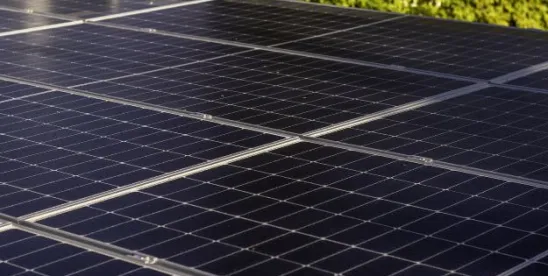That two-year pause of AD/CVD duties ends on June 6. The Administration also revealed long-awaited measures aimed at strengthening American solar manufacturing, including, among others: (1) the imposition of AD/CVD duties on imports of solar cells and modules assembled in Cambodia, Thailand, Malaysia and Vietnam from Chinese components that were found to be circumventing existing AD/CVD orders on China; (2) strengthening the global safeguard measures on solar products by removing the exclusion from duties for bifacial panels and increasing the cell tariff rate quota (TRQ) if cell imports approach the five-gigawatt TRQ level; (3) monitoring import surges; and (4) the enforcement of provisions intended to prevent the stockpiling of solar cells and modules. The latter provision refers to the requirement that imports of solar products from Cambodia, Malaysia, Thailand, and Vietnam made between November 15, 2022, and June 6, 2024, must be utilized (used or installed) in the United States within 180 days of June 6. Entries that are not utilized by the end of the 180-day period will be subject to AD/CVD duties. On the enforcement side, the Administration warned that US Customs and Border Protection (CBP) has announced that it will “vigorously” enforce this provision, including by requiring importers to provide to CBP a certification of solar module utilization with detailed information about the modules being deployed.
These announcements came only one week after the US Court of International Trade (CIT) rejected the US government’s motion to dismiss an appeal brought by Auxin Solar, Inc. and Concept Clean Energy, Inc., domestic solar manufacturers, challenging Commerce’s regulations that sought to implement the “solar bridge” envisioned by Proclamation 10414 and that allowed significant volumes of solar cells and modules from Southeast Asia to be imported in the US duty-free. In finding that Auxin’s action was squarely within the court’s jurisdiction, the CIT gave the green light to Auxin’s challenge to Commerce’s novel regulations issued in response to the Presidential Proclamation.
Origins of the Solar Bridge
As a reminder, the “solar bridge,” allowing for duty-free imports of cells and modules from Southeast Asia, began on June 6, 2022, when President Biden declared a national emergency and stated that immediate action was needed to ensure access to solar cells and modules to assist the United States in meeting its electricity generation needs. Proclamation 10414 instructed the Secretary of Commerce to pause the imposition of AD/CVD duties that would otherwise apply to imports from Southeast Asia that were circumventing existing AD/CVD orders for a period of two years or until the emergency terminates. On September 16, 2022, the Commerce published a final rule titled “Procedures Covering Suspension of Liquidation, Duties and Estimated Duties in Accord With Presidential Proclamation 10414” (the Duty Suspension Rule) to implement a moratorium on AD/CVD duties on solar cell and panel imports from the four countries in Southeast Asia.
The two-year moratorium came into effect during an investigation by Commerce to determine whether solar cells and modules made in Cambodia, Malaysia, Thailand, and Vietnam using Chinese parts and components were circumventing the AD/CVD orders on solar cells and modules from China. The Duty Suspension Rulehad the effect of exempting from the collection and assessment of AD/CV duties all imports from these four countries that were certified to be utilized within 180 days after the expiration of the emergency period. Following Commerce’s final affirmative determination of circumvention on August 23, 2023, Auxin challenged Commerce’s rulemaking, determinations, and instructions at the CIT under the Administrative Procedure Act on January 17, 2024.
The Court of International Trade’s Jurisdictional Ruling
On May 9, 2024, the CIT denied the government’s motion to dismiss Auxin Solar and Concept Clean Energy’s claims that the US government “failed to collect antidumping and countervailing duty cash deposits and failed to suspend liquidation on products circumventing the antidumping and countervailing duty orders concerning CSPV cells and modules from China.” We address below two aspects of the CIT’s decision: its ruling on jurisdiction and on the Parties’ Joint Stipulation.
Jurisdiction
The government sought to dismiss the action for lack of subject matter jurisdiction, arguing that plaintiffs’ reliance on the CIT’s residual jurisdiction statute, 28 U.S.C. § 1581(i), was in error because jurisdiction was available under a different subsection of that statute, § 1581(c), which provides jurisdiction to the CIT for challenges to Commerce’s final determinations in AD/CVD circumvention inquiries.
The CIT rejected the government’s motion to dismiss, finding that Auxin’s appeal fell “squarely within” the court’s residual jurisdiction because Auxin was challenging Commerce’s authority to issue the Duty Suspension Rule that implemented the “solar bridge,” not Commerce’s final determination of circumvention.
The court found that Auxin’s claims fell within its residual jurisdiction as they relate to the “administration and enforcement” of Commerce’s circumvention findings, not the circumvention findings themselves.
The court also explained that Auxin’s action was analogous to other cases where plaintiffs were subject to Commerce instructions that did not reflect Commerce’s final determination. Notably, in such analogous cases, the CIT ordered reliquidation of entries (i.e. imports) where the instructions from Commerce to CBP were found to be unlawful. Reliquidation in this instance would mean applying AD/CVD duties on the imports of circumventing solar cells and modules that entered duty-free during the two-year period of the “solar bridge.”
Joint Stipulation
Although Auxin applied for a preliminary injunction shortly after filing its complaint, it changed course after the government’s motion to dismiss, seeking instead a joint stipulation regarding the CIT’s authority to order reliquidation of entries. The parties explained that the purpose of the joint stipulation was to support the availability of reliquidation as a remedial power, which the government conceded.
The court granted the joint stipulation regarding the CIT’s authority to “order reliquidation and direct the United States to reliquidate entries ‘for which liquidation was not suspended and cash deposited were not collected,’” under Proclamation 10414. While the joint stipulation has no immediate effect, it signals the parties’ understanding that should Auxin prevail in this action, imports made over the two-year period of the “solar bridge,” without payment of AD/CVD duties, will be at risk of being assessed AD/CVD duties.
Conclusion
The case raises novel questions of deference and rulemaking procedures. While the court has yet to decide on the validity of Commerce’s rulemaking, determinations, and instructions implementing Proclamation 10414, if the court ultimately finds in favor of plaintiffs, an order of reliquidation would affect a large volume of imports of solar products made over approximately 18 months.
Only time will tell if Commerce’s Duty Suspension Rule withstands judicial review. As imports head for the exit ramp off the “solar bridge,” the litigation is just starting.



 />i
/>i
